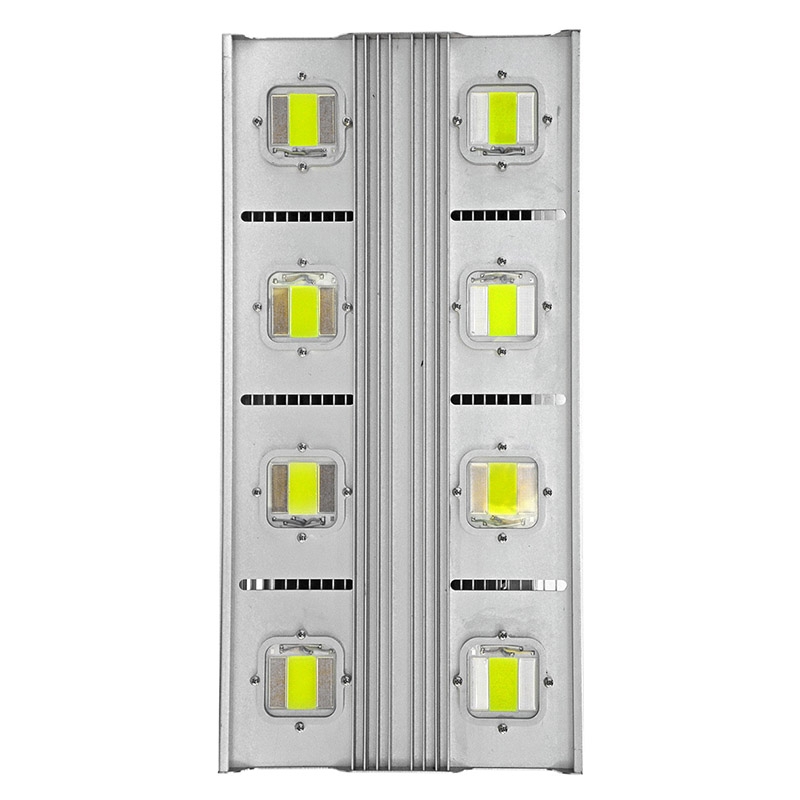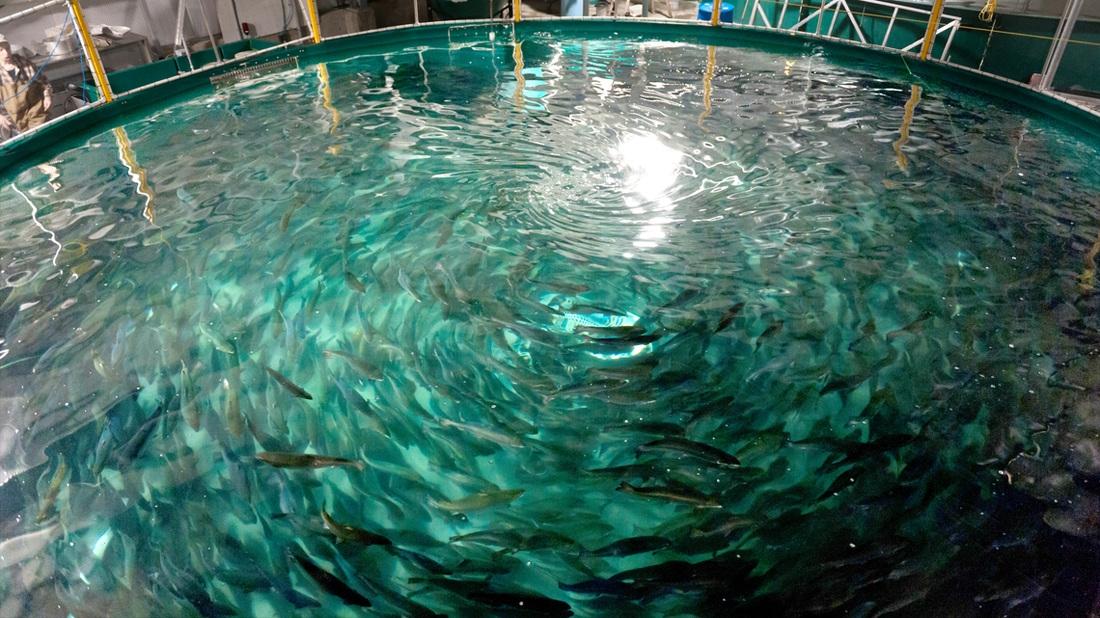Fishing has been an essential source of sustenance and livelihood for human communities for countless centuries, and its significance in the contemporary global economy remains undeniable. Throughout history, numerous techniques and tools have evolved to augment fishing efficiency, and among these innovations, underwater fish attracting lights have emerged as pivotal instruments. These specialized luminaries are meticulously crafted to illuminate the submerged aquatic milieu, enticing fish into the proximity of fishing vessels.
The utilization of underwater fish attracting lights has become an integral facet of contemporary fishing methodologies. Their role in enhancing underwater visibility, elevating catch rates, and advocating for more sustainable fishing practices is paramount. Whether wielded by commercial fishermen seeking profitability or deployed for the purposes of scientific inquiry into aquatic ecosystems, these lights assume a pivotal position in ensuring the sustained availability of fish resources while minimizing adverse impacts on aquatic environments.
Benefits of Using Underwater Fish Attracting Lights
Increased Fish Attraction
One of the primary advantages of employing underwater fish attracting lights in fishing operations is the substantial increase in fish attraction. These specialized lights emit wavelengths of light that mimic the natural bioluminescence found in the aquatic ecosystem. Fish are naturally drawn to light sources as they associate them with prey or potential feeding opportunities. By creating an enticing visual stimulus, fish attracting lights effectively lure fish towards the vicinity of fishing vessels. This heightened fish attraction greatly enhances the chances of a successful catch, making it an indispensable tool for both commercial and recreational fishermen.
Enhanced Visibility for Night Fishing
Underwater fish attracting lights are particularly valuable for night fishing expeditions. In the absence of natural daylight, these lights serve as artificial sources of illumination, casting a radiant glow that penetrates the darkness of oceans, lakes, and rivers. This improved visibility enables fishermen to continue their operations during nighttime hours, expanding their fishing opportunities. Nighttime fishing can be advantageous as some fish species are more active and approachable in the dark. Fishermen can capitalize on this behavior with the aid of fish attracting lights, increasing their catch rates and overall productivity.
Versatility in Different Fishing Environments
Another notable benefit of underwater fish attracting lights is their versatility in various fishing environments. These lights can be effectively employed in both freshwater and saltwater settings, adapting to the diverse ecosystems in which fishing occurs. Whether it’s in deep-sea fishing, lake angling, or riverbank fishing, fish attracting lights can be customized and positioned to suit the specific needs of each environment. This adaptability makes them an indispensable asset for fishermen who engage in a wide range of fishing activities, ensuring their effectiveness across diverse landscapes and aquatic conditions.
In summary, underwater fish attracting lights offer a multitude of benefits in fishing practices. They significantly boost fish attraction, provide crucial visibility for night fishing, and exhibit remarkable versatility across different fishing environments. These advantages collectively contribute to higher catch rates, improved efficiency, and enhanced fishing experiences for both professional fishermen and recreational anglers alike.
How Underwater Fish Attracting Lights Work
Light Spectrum and Fish Attraction
Underwater fish attracting lights operate on the principle of utilizing specific light spectra to entice fish. Fish are naturally responsive to certain wavelengths of light, particularly those in the blue and green spectrum. These wavelengths closely resemble the bioluminescent emissions found in their natural environment. When fish encounter these enticing colors, they associate them with prey or potential feeding opportunities, which triggers their curiosity and attracts them to the light source.
To maximize fish attraction, underwater fish attracting lights are designed to emit light within this preferred spectrum. The choice of light color and intensity can vary depending on the targeted fish species and the specific fishing conditions. By emitting light that mimics the natural environment, these lights effectively draw fish closer to the fishing area, increasing the likelihood of a successful catch.
Light Placement and Strategies
The placement and strategic use of underwater fish attracting lights are critical factors in their effectiveness. Fishermen typically position these lights strategically around or beneath their fishing vessels. This placement can vary depending on factors such as water depth, fish behavior, and the desired fishing technique.
Common strategies for using fish attracting lights include:
1. Submerged Lights: Lights are submerged beneath the water’s surface, often at various depths, to create an alluring glow that attracts fish from below.
2. Surface Lights: Lights can be positioned at the water’s surface to attract fish swimming near the top, such as species that feed on surface insects or smaller fish.
3. Surrounding Lights: Lights are placed around the fishing area to create an illuminated zone, effectively enclosing fish and concentrating them in the vicinity of the vessel.
4. Strobing or Pulsing: Some fish attracting lights can be set to strobe or pulse, simulating the movement of prey and making the light source even more enticing to fish.
Strategic placement and use of underwater fish attracting lights allow fishermen to optimize their fishing efforts, making it easier to attract and catch the desired fish species while minimizing bycatch.
LED vs. Traditional Light Sources
Traditionally, incandescent and fluorescent bulbs were used for underwater fish attracting lights. However, in recent years, LED (Light Emitting Diode) technology has gained prominence due to its numerous advantages. LED lights are highly energy-efficient, durable, and long-lasting. They can produce specific colors of light, making it easier to tailor the light spectrum to the preferences of target fish species. Additionally, LED lights can be designed to emit light in a more directional manner, which reduces light pollution and focuses the attraction on the intended area.
In contrast, traditional light sources are often less energy-efficient and have shorter lifespans. They may also emit excess heat, which can be problematic in certain fishing applications.
Underwater fish attracting lights work by exploiting the fish’s natural response to specific light spectra, strategically placing lights to concentrate fish, and utilizing advanced LED technology for improved efficiency and effectiveness. These lights are a valuable tool in modern fishing, aiding fishermen in attracting and catching their target species while promoting more sustainable and environmentally conscious fishing practices.
Illuminating Success: Real-Life Stories and Testimonials of Underwater Fish Attracting Lights
Personal Anecdotes from Anglers
John’s Nighttime Triumph: John, an avid angler, shares his experience with underwater fish attracting lights. “I’ve been fishing for years, and once I started using fish attracting lights during nighttime trips, it was a game-changer. The first time I tried them, I couldn’t believe the number of fish I caught. It’s like they couldn’t resist the light. I’ve had some of my best catches at night ever since.”
Jenny’s Competitive Edge: Jenny, a professional fisherwoman, emphasizes the competitive advantage of fish attracting lights. “In the commercial fishing industry, every catch counts. Using these lights has boosted our productivity significantly. We save time and fuel while bringing in more fish, which is a win-win for our business and the environment.”
Notable Catches and Experiences Using These Lights
Record-Breaking Tuna Catch: In 2019, a fishing crew set a world record by catching a massive bluefin tuna weighing over 1,000 pounds. They attributed their success to the strategic use of underwater fish attracting lights. The crew reported that the lights attracted a school of these prized fish, leading to their remarkable catch.
Conservation Success Story: In a conservation-focused project, scientists used fish attracting lights to study and protect endangered fish species in a marine sanctuary. By luring the fish to specific areas for observation, researchers gained valuable insights into the behavior and migration patterns of these species, aiding in their conservation efforts.
Recreational Fishing Tales: Many recreational anglers have shared stories of unforgettable fishing experiences using fish attracting lights. They describe evenings spent with friends and family, surrounded by shimmering waters and the excitement of reeling in various fish species. These lights have not only improved their catch rates but have also enhanced the overall enjoyment of their fishing outings.
These real-life success stories and testimonials from anglers and professionals alike underscore the transformative impact of underwater fish attracting lights on fishing experiences. Whether it’s for recreational enjoyment, commercial success, or scientific research, these lights continue to play a pivotal role in maximizing catch rates and contributing to the sustainable management of aquatic resources.
Tips for Using Underwater Fish Attracting Lights Effectively
Proper Setup and Positioning
1) Depth Considerations: Depending on the depth of the water you’re fishing in, adjust the placement of fish attracting lights accordingly. Deeper waters may require lights to be positioned at various depths to reach different fish layers effectively.
2) Even Distribution: Ensure an even distribution of lights around your fishing area to create a balanced and enticing illumination. This helps in preventing fish from congregating in one specific spot.
3) Stabilization: Securely attach the lights to your fishing vessel or buoys to prevent them from drifting or moving due to currents or waves. Stable positioning is crucial for maintaining the desired effect.
Choosing the Right Color and Intensity
1) Species-Specific Selection: Research the preferences of the fish species you are targeting. Different fish are attracted to various colors and intensities of light. Tailor your choice of light color and intensity to match the species’ natural preferences.
2) Experiment and Observe: If you’re uncertain about the best light color or intensity, don’t hesitate to experiment. Observe how fish respond to different settings and adjust accordingly until you achieve the desired results.
3) Dimmable Lights: Consider using dimmable fish attracting lights. This flexibility allows you to fine-tune the intensity throughout your fishing trip, adapting to changing conditions and fish behavior.
Conservation and Responsible Usage
1) Minimize Light Pollution: Be conscious of the environmental impact of your lights. Use shielding or directional fixtures to minimize light pollution and prevent disturbance to marine life, including nesting sea turtles and birds.
2) Adhere to Regulations: Familiarize yourself with local and regional fishing regulations regarding the use of fish attracting lights. Some areas may have restrictions or specific guidelines to ensure responsible usage.
3) Avoid Overuse: While fish attracting lights can significantly enhance catch rates, avoid overusing them, especially in sensitive ecosystems. Overuse can disrupt natural behaviors and ecosystems, potentially leading to negative ecological consequences.
4) Bycatch Mitigation: Implement bycatch mitigation strategies alongside fish attracting lights to reduce unintentional catch of non-target species. This can include using specialized gear or employing size and species-selective practices.
5) Educate Others: Share responsible fishing practices with fellow anglers and fishermen to promote awareness and sustainable fishing methods within your community.
By following these tips for effective and responsible usage of underwater fish attracting lights, you can maximize your catch rates while minimizing the impact on the aquatic environment. Responsible fishing practices contribute to the long-term sustainability of fish populations and the health of marine ecosystems.
CONCLUSION
In essence, underwater fish attracting lights are not just accessories; they’re game-changers that can revolutionize your fishing endeavors. Whether you’re a seasoned angler or a novice, consider incorporating these lights into your fishing arsenal to unlock a world of possibilities beneath the water’s surface. With the right knowledge and application, underwater fish attracting lights can elevate your fishing experience, making each trip a memorable and successful one. So, cast your light and reel in the rewards of this transformative technology.
Post time: Oct-16-2023







